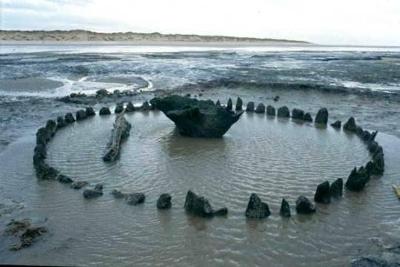Seahenge gallery at Lynn Museum

In the summer of 1998, the shifting sands of Holme beach on the North Norfolk coast revealed something extraordinary.
Preserved in the sand were the remains of a unique timber circle dating back over 4,000 years to the Early Bronze Age. The discovery captured the imagination of archaeologists and the public alike and became popularly known as 'Seahenge'.
The circle was originally built on the saltmarsh away from the sea and specialists estimate it to have been built of timbers dating from the spring of 2049 BC.
It would have been positioned in an area protected from the sea by sand dunes and mud flats. This swampy area created a layer of peat which slowly covered the timbers, protecting them from decay
The circle is 6.6m in diameter and comprises of 55 closely-fitted oak posts originally standing up to 3m in height.
It is thought to have been constructed by the people of the small farming communities who lived in wattle and daub round houses. We can never be certain what its purpose was. It remains an incredible monument to the skill and beliefs of our Bronze Age ancestors.
Archaeologists quickly realised the significance of such a find and, although controversial, a decision was taken to save it from the threat posed by the sea. Once removed the timbers were taken to the Bronze Age Centre at Flag Fen, near Peterborough, and were placed in fresh water tanks to clean the mud and salts. After experts had examined and studied them, a complex conservation project was started. In 2008, half of the timbers and, two years later, the central stump were put on permanent display in Lynn Museum.
We have more information about Seahenge on our Google Arts and Culture page (opens new window).





